What do you expect when you come across a desolate land where the natural resources for hundreds of miles includes salt water, unforgiving heat, and very little trees to provide shade. Naturally, you would assume no living creatures could survive in this area unless they were amoebas one chromosome away from shrimp. But you’d be surprised to know there is life on the Makgadikgadi Pan in northern Botswana. Everything from large mammals to micro creatures have found ways to adapt and even thrive in this unbearable region. This guide will walk you through the animals that have defied the odds and made Makgadikgadi Pan their year round home.
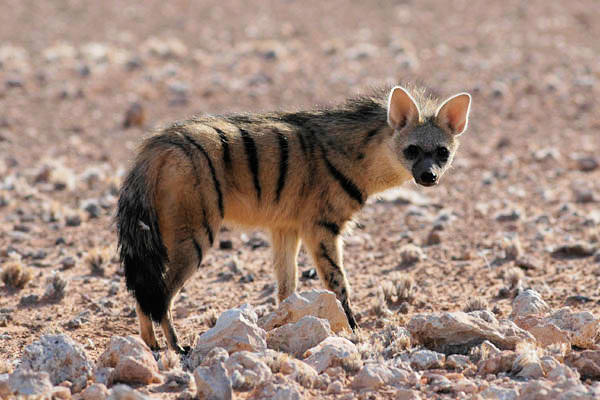
Courtesy of Wagon16/Flickr.com
Aardwolf
No, it’s not a hyena or a wild dog. Aardwolves are one of the lesser-known animals roaming the salt pans of Africa. They are also nocturnal, so your best shot of spotting them is right before dark when they emerge from their sleep to scavenge for food (which are usually termites).
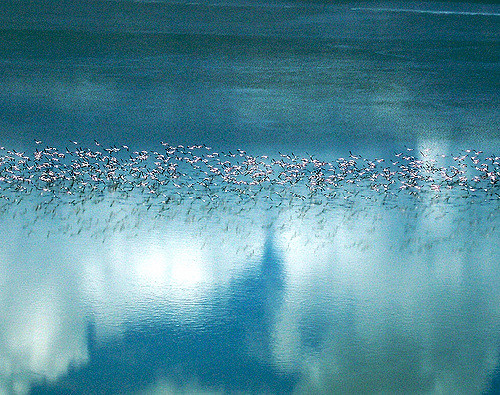
Courtesy of ed glickman/Flickr.com Creative Commons 2.0
Flamingos
Both greater and lesser flamingos flock to the salty water of Makgadikgadi Pan. They migrate to the region in the summer by the thousands, making it a spectacular sight to see. Guests especially enjoy when the water gets blanketed with the pink birds. The flamingos are not bothered by the high level of salt since they feed off the algae that grows in the water.
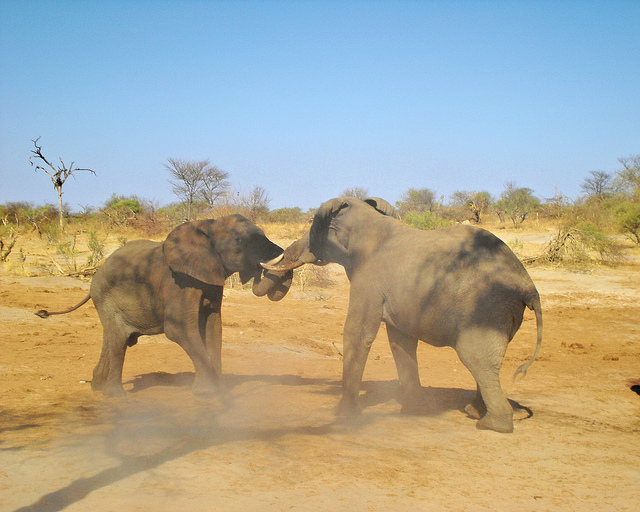
Courtesy of SarahTz/Flickr.com Creative Commons 2.0
Elephants
Visiting Makgadikgadi Pan doesn’t necessarily mean you’ll run into an elephant. However, these big-eared giants can occasionally be found wandering through the pan and in nearby areas. But if you do want to guarantee spotting the large animals, book a stay at Elephants Sands, a nearby safari camp where skilled guides will take guests to secretive dwelling spots.
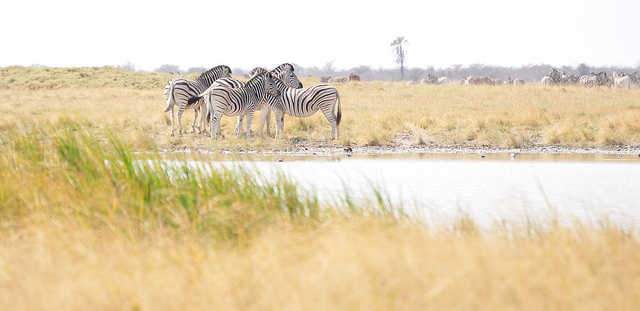
Courtesy of abi.bhattachan/Flickr.com Creative Commons 2.0
Zebras
If you’re wondering where’s the place to see the largest concentration of zebras in the world, surprisingly, the Makgadikgadi Pan is it. Burchell’s Zebra is a type of plains zebra that can be found in other parts of Africa, but nothing like as many as you’ll find in the pan. The population of zebras in the area is so large that it dominates the land, next to the wildebeests.
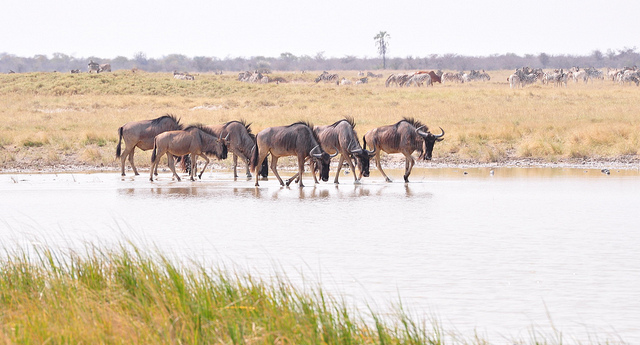
Courtesy of abi.bhattachan/Flickr.com Creative Commons 2.0
Wildebeests
The most common species of antelope you’ll find are the not-so-attractive wildebeests that can be found grazing alongside zebras. The wildebeests numbers by the thousands so you’re likely to find them roaming the grounds on your safari trip. The antelopes adapt to the harsh conditions by drinking out of the rain-filled salt pans and eating nearby grasses that are full of nutrition.

Courtesy of abi.bhattachan/Flickr.com Creative Commons 2.0
Lions
Lions don’t decide to make Makgadikgadi Pan their home unless they had a concrete reason to. Thanks to the pan’s abundant population of wildebeest and zebras, lions will go wherever they can to get their next meal. The tall yellowish grass provides the perfect atmosphere for the lions to camouflage themselves into the landscape where they lie in wait for an unsuspecting zebra or wildebeest to come to the water. The best time to spot the predatory cats is during its dry season when their prey are so desperate for water that they will drink out of the salt pans. Drinking salt water then getting eaten by a lion doesn’t sound like a great way to go.

Courtesy of cuatrok77/Flickr.com Creative Commons 2.0
Giraffes
Giraffes are commonly seen in Makgadikgadi Pan reaching for sparse leaves from Baobab and other trees. Like the zebras and the wildebeests, the giraffes become more abundant in the area during dry season when they come to its rain-filled water to drink. Lions would much rather hunt the zebras and wildebeest because a powerful hind kick from a giraffe could result in a fatal blow.
More from AFKTravel:
A Photo Tour Of Botswana’s Makgadikgadi Pan
10 Things to Know About Traveling in Botswana
10 Secret Corners of Botswana’s Kalahari
Want to discover the finer side of Africa? Sign up for our weekly newsletter.

